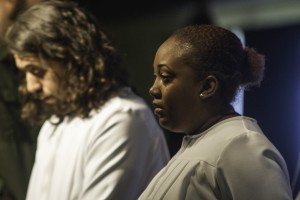Martin Luther King Jr. is one of the great figures in U.S. history: a skilled orator, passionate preacher and principled civil rights advocate. He should also be required reading (and listening) for all poets, songwriters and hymnodists. Rich poetic and rhetorical devices fill his speeches and sermons, stamping them indelibly on our collective conscious. Let’s look at one technique today, from his “I Have A Dream” speech.
Anaphora is the repetition of the same words at the beginning of successive lines. Hymn writers from Charles Wesley to Fanny Crosby to Bill and Gloria Gaither have used anaphora well in songs like “Come, Thou Long Expected Jesus,” Redeemed How I Love To Proclaim It” and “Because He Lives.” This rhetorical device emphasizes the repeated word or phrase, giving it an increasing emotional power with each repetition.
In Martin Luther King’s “I have a dream” speech, he repeats “I have a dream” eight sentences in a row. Each time, the phrase gains power until we are all swept up in his dream of racial equality and love for one another. And “I have a dream” is just one of many instances of anaphora in King’s speech:
- “One hundred years later…” (paragraph three)
- “Now is the time…” (paragraph six)
- “We must…” (paragraph eight)
- “We can never (cannot) be satisfied…” (paragraph thirteen)
- “Go back to…” (paragraph fourteen)
- “I Have a Dream…” (paragraphs sixteen through twenty-four)
- “With this faith, …” (paragraph twenty-six)
- “Let freedom ring (from) …” (paragraphs twenty-seven through forty-one)
You can read the full text of Martin Luther King’s “I Have A Dream Speech” speech here, but let’s look at paragraph three to see anaphora in action with “One hundred year’s later.”
But one hundred years later, the Negro still is not free. One hundred years later, the life of the Negro is still sadly crippled by the manacles of segregation and the chains of discrimination. One hundred years later, the Negro lives on a lonely island of poverty in the midst of a vast ocean of material prosperity. One hundred years later, the Negro is still languished in the corners of American society and finds himself an exile in his own land. And so we’ve come here today to dramatize a shameful condition.
Powerful, yes? As mentioned, Wesley used the technique in “Come, Thou Long Expected Jesus.” Instead of repeating a phrase, he repeated one word: “Born” –
Born Thy people to deliver
Born a child and yet a King,
Born to reign in us forever,
So let’s put this technique in action. I’m going to make up some lyrics on the spot, using the phrase Now and forever:
Now and forever, I am redeemed
Now and forever, my chains are released
Now and forever, Christ lives in me
Now and forever, now and forever!
Certainly not as eloquent as Dr. King, but you get the idea.
- Songwriting Exercise: Use anaphora in your next praise song or modern hymn. Either repeat a phrase like “I have a dream” or a word like “born.” Repeat it in at least three successive lines.
Sometimes one good technique like anaphora is all it takes to lift an average set of lyrics out of the dolldrums, into something unique and memorable.
Top photo courtesy Chuck Heeke
You may be interested in “Martin Luther King, Jr: A letter to American Christian in 1956 (and today) by Ed Stetzer

{ 5 trackbacks }